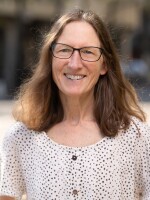International student populations at the University of Oregon and Lane Community College have ballooned in the last five years. Both schools have long-term goals to further increase the numbers. However certain costs and risks could jeopardize their efforts.
The Eugene-based campuses are part of a national trend. In a study released last month, the U.S. State Department says the nation's international student population is at an all-time high, gaining ten percent last academic year. Dennis Galvan, U of O's Vice Provost for International Affairs, says the school wants to give every student a global experience. He says a quarter of undergrads study abroad; for the rest:
Galvan: “Having an international student population on campus, speaking different languages, practicing different religions, eating different food, and most importantly bringing a different perspective into the classroom environment is a good way for domestic students to get some international exposure.”
It also brings in the bucks. The Department of Commerce says foreign students contributed $30 billion dollars to the economy in 2014. Eugene's share of that windfall is estimated at $158 million dollars, and over 2,000 jobs. A video on LCC's website emphasizes the arts and outdoors as well as tax-free shopping.

International students at the U of O pay out of state tuition. And they're a good risk. Galvan sites a recent study:
Galvan: “The rate of an international student continuing from first year to second year was actually higher than domestic students. And GPAs were higher on average.”
Several countries provide funds for their brightest scholars. Nabiele Ismail is an economics major from Malaysia. Speaking at a recent social hour, she says every high school senior there takes a standardized test:
Ismail: “The government will select the candidates. Those who scored higher in the exam will be chosen for the scholarship program. Literally, they match us with the course that we want to study and also the university itself.”

Gary Gao heads U of O's International Student Association. Like most foreign students there, he's from China. He says more people from his country are now willing to travel for school, and can afford it:
Gao: “Chinese tradition, the family will pay the college tuition. Mostly Chinese students they come here using [their] parent's money.”
Ability to pay could change quickly. Jennifer Falzerano directs the International Programs at Lane Community College:
Falzerano: “There's a lot of currency issues going on in the world, where the U.S. has a very strong currency compared to local currencies, and that often creates a challenge.”
Falzerano says aid money can also dry up. This fall, Saudi Arabia had already maxed out its scholarship quota, so no one else from that country was admitted. Recruiting worldwide has its own price tag. LCC and the U of O send representatives to college fairs all over the globe, from Vietnam to Brazil.
Foreign student numbers at both schools more than doubled since 2010, so the schools scrambled to add academic and cultural support. Falzerano says LCC had growing pains from the extra English as a Second Language classes:

Falzerano: “As we've grown the international students, we have had to find more classroom space to keep that mix going. And you know there's only so many classrooms, so we've had to get very creative with scheduling.”
Paolo Daniele is an International Student Advisor at U of O. He says his department is stretched thin. If expansion continues, he sees a need for scholarships and classroom targeted language assistance:
Daniele: “Maybe something to teach them how to approach English in a classroom setting, which is different from spoken English or colloquial English, but the proper way of writing papers for example, the proper way of approaching a professor.”
After earning a degree, most students return to their home country, in a way, robbing Oregon's economy of newly educated employees. Abdul Abusaq is a junior from Saudi Arabia:

Abusaq: “After last summer I change my plan to go back home, to have work there. Reporter: Did something change your mind? After Donald Trump, yeah. He gonna fire me, so I will go by myself.”
Abusaq is joking, but foreign policy does matter for these students. It's important from the recruiting side as well, says U of O's Dennis Galvan:
Galvan: “Two thirds of our international students are from one country, from China. Which is very common. So our total student population could any day now, have a lot to do with changes in Chinese higher ed, changes in the Chinese economy. It's not exactly something we have complete control over.”
In the meantime, students like Nabiele Ismail say they're pleased with Eugene's environment:
Ismail: “Being an international student here I don't feel isolated. I don't feel like a foreign student. I feel like I'm being treated equally with the local students. That's the best thing.”
It's a good thing for LCC and U of O as well, who will try over the coming years to continue to welcome more international students to Eugene.






